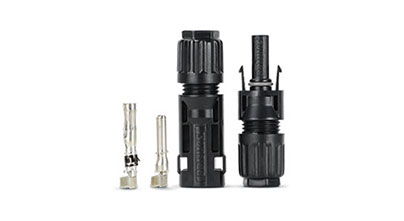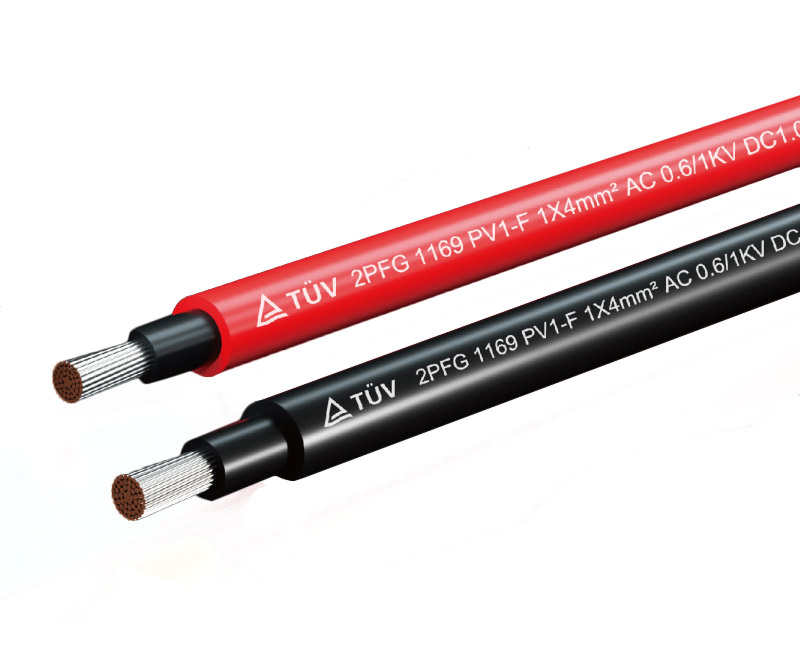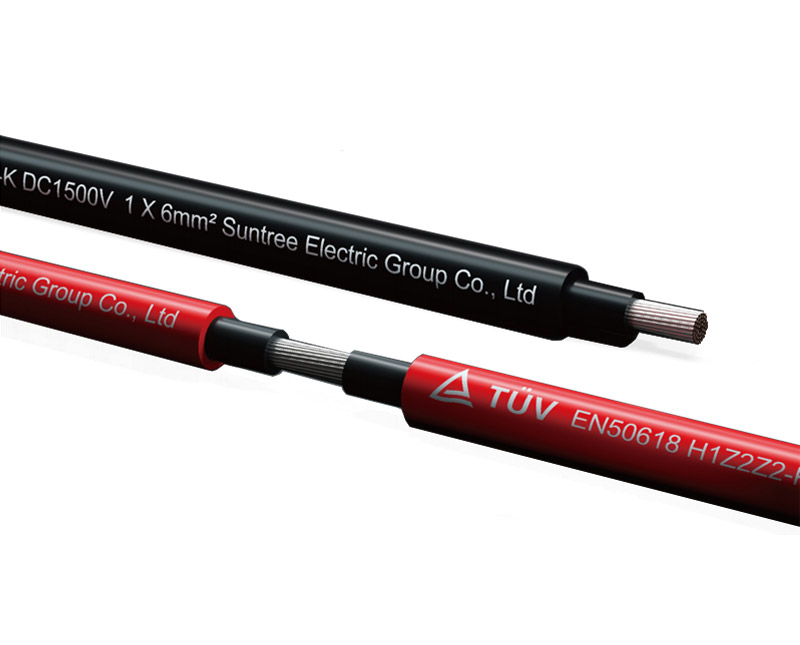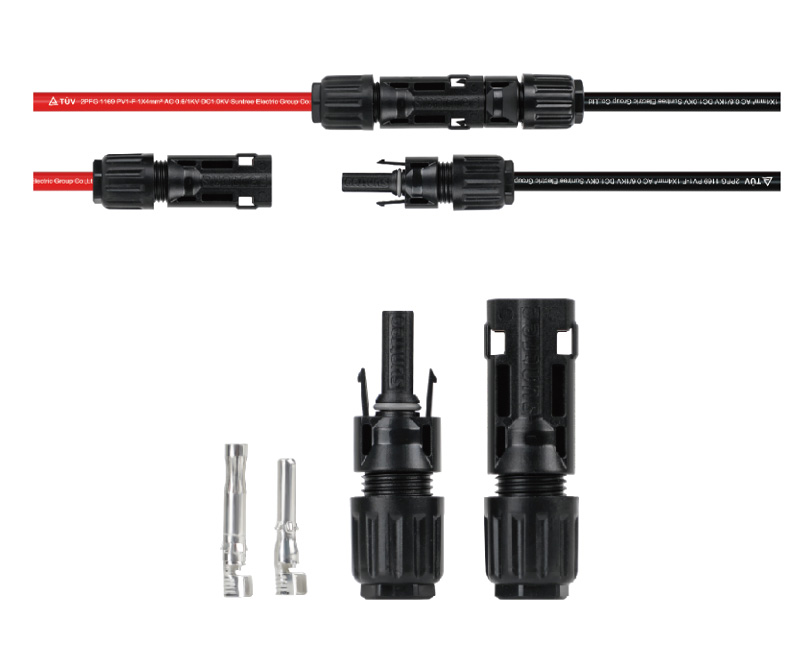Solar Wire Cost and Performance
In the current booming development of solar power generation systems, Solar Wire, as a crucial link for energy transmission, has drawn significant attention in terms of cost and cost-effectiveness. For investors, installers, and end-users of solar energy projects, having an in-depth understanding of the cost composition of Solar Wire and how to measure its cost-effectiveness will help them make wise decisions during the system construction and operation processes, maximizing both economic and energy benefits. This article will comprehensively analyze the relevant elements of the cost and cost-effectiveness of Solar Wire, presenting you with a clear picture.

I. Cost Composition of Solar Wire
Cost of Raw Materials
Conductor Materials: The conductors of Solar Wire mainly include copper and aluminum. Copper has excellent electrical conductivity and can effectively reduce power transmission losses, but its price is relatively high and is greatly affected by the global copper market's supply and demand relationship. For example, when there is a strong demand for copper in the electronics manufacturing industry and other sectors, the price of copper rises, and the production cost of Solar Wire also increases significantly. Although aluminum's electrical conductivity is slightly inferior to that of copper, it is more affordable. For some solar energy projects that are more cost-sensitive and have relatively less stringent requirements for power transmission, aluminum conductor wires become an economical choice.
Insulation Materials: High-quality insulation materials are an indispensable part of Solar Wire. Common ones include polyvinyl chloride (PVC), cross-linked polyethylene (XLPE), etc. These insulation materials need to have good weather resistance, electrical insulation performance, and mechanical strength. For example, XLPE insulation material can maintain stable insulation performance under high-temperature and high-humidity environments, but its production process is relatively complex, and the cost is also higher. The cost of insulation materials depends not only on the raw materials themselves but also on the production process and formulation. Some insulation materials with special additives for anti-ultraviolet and antioxidant properties will have a higher price.
Production and Processing Costs
Manufacturing Process: The production process of Solar Wire involves multiple procedures, such as wire drawing, stranding, and insulation extrusion. Advanced wire drawing techniques can precisely control the diameter and uniformity of the wire, improving electrical conductivity, but they require large equipment and technological investments. The stranding process affects the flexibility and current-carrying capacity of the wire, and different stranding structures and process complexity levels will also lead to cost differences. The insulation extrusion process requires high-precision equipment to ensure the uniformity of the insulation layer's thickness and its adhesion, which all increase production and processing costs.
Quality Inspection: To ensure that Solar Wire meets industry standards and performance requirements, strict quality inspections are required during the production process, including resistance testing, insulation withstand voltage testing, and aging resistance testing. Professional testing equipment and personnel training all require capital investment, and these costs will eventually be shared in the product price. For example, high-precision resistance testing equipment can accurately detect the resistance value of the wire to ensure that it is within the specified range and meets the requirements of efficient power transmission, but the equipment purchase and maintenance costs are relatively high.
Transportation and Sales Costs
Transportation Expenses: Solar Wire usually has a relatively large volume and weight, so transportation costs cannot be ignored. Transportation distance, transportation mode (road, railway, sea transportation, etc.), and packaging methods of goods will all affect transportation expenses. For example, for the transportation from the manufacturer to the site of a solar energy project in a remote area, long-distance road transportation combined with possible multiple loadings and unloadings will significantly increase transportation costs. In addition, appropriate packaging materials and protective measures are needed to prevent the wire from being damaged during transportation, which also increases packaging costs and thus affects the final selling price.
Sales Links: From the manufacturer to the distributor and then to the end-user, each sales link will generate certain costs, including the salaries of sales personnel, marketing expenses, and warehousing costs. Distributors will mark up the price based on the purchase price to ensure a certain profit margin. For example, during the market promotion process, the costs of participating in industry exhibitions, advertising, and other marketing activities will be shared in the product selling price, causing the terminal price of Solar Wire to rise.
II. Factors for Measuring the Cost-Effectiveness of Solar Wire
Electrical Conductivity and Energy Transmission Efficiency
Low Resistance Characteristics: The lower the resistance of Solar Wire, the smaller the power loss during the process of electrical energy transmission. For example, in a 10-kilowatt solar power generation system, if wires with relatively high resistance are used, 1% - 2% of the electrical energy may be lost during transmission, while by using high-quality wires with low resistance, the power loss can be reduced to below 0.5%. In the long run, this reduced energy loss is equivalent to an increase in the system's power generation capacity, thereby improving economic benefits. For instance, in an area with abundant sunlight and high power generation throughout the year, low-resistance wires can save users a considerable amount of electricity bills, and the long-term benefits brought by them are sufficient to offset the higher initial procurement costs.
Current-Carrying Capacity Adaptability: Solar Wire needs to be able to carry the current generated by the solar energy system without overheating. Different specifications of solar power generation systems generate different magnitudes of current, so it is crucial to choose wires with appropriate current-carrying capacities. If the current-carrying capacity of the wire is too small, it will cause the wire to heat up, accelerate the aging of the insulation material, and even lead to safety accidents. On the other hand, if the current-carrying capacity is too large, although it is safe, it will result in cost waste. For example, for a small household solar power generation system, choosing wires with an overly large current-carrying capacity will unnecessarily increase the cost, while for a large commercial solar power station, wires with insufficient current-carrying capacity will not be able to meet the power transmission requirements and affect the normal operation of the system. Therefore, selecting Solar Wire with an appropriate current-carrying capacity according to the actual current magnitude of the system can not only ensure the safe and stable operation of the system but also optimize the cost-benefit.
Durability and Life Cycle Cost
Weather Resistance Performance: Solar energy systems are usually installed outdoors and are subjected to harsh environmental conditions such as direct sunlight, wind and rain erosion, and temperature changes. The insulation materials and conductors of Solar Wire need to have good weather resistance to ensure long-term stable performance. For example, insulation materials with good anti-ultraviolet performance can avoid cracking and aging under long-term sunlight exposure, thus ensuring the insulation performance of the wire. High-quality conductor materials can maintain stable electrical conductivity in environments with large temperature variations and are not prone to breakage or poor contact due to thermal expansion and contraction. From the perspective of life cycle cost, although the initial purchase cost of Solar Wire with good weather resistance may be higher, it does not need to be replaced frequently during the entire service life, reducing maintenance costs and the costs of materials and labor for wire replacement, resulting in a lower overall cost.
Reliability and Failure Cost: The reliability of Solar Wire is directly related to the operational stability of the solar energy system. If the wire frequently malfunctions during use, such as short circuits or open circuits, it will not only cause the power generation system to shut down and result in power generation losses but also require a large amount of manpower and material resources for maintenance. For example, in an industrial solar power generation project, a wire failure may lead to several hours or even days of downtime, and the economic losses generated far exceed the value of the wire itself. Therefore, choosing reliable Solar Wire, although its price may be relatively high, can reduce the system's failure risk and failure cost and improve the economic benefits and stability of the entire solar power generation system.
Compatibility and System Integration Cost
Convenience of Connection with Components: Solar Wire needs to be reliably connected with solar panels, inverters, combiner boxes, and other components. The compatibility of interfaces and the convenience of connection are of vital importance. If the wire's connectors do not match the connection ports of the components or if the connection process is complicated and cumbersome, it will increase installation time and labor costs. For example, some Solar Wires with standardized interface designs can be quickly and easily connected to various mainstream brands of solar components, greatly improving the installation efficiency and reducing the system integration cost. On the contrary, if the wire interfaces are not compatible, additional adapter accessories may need to be purchased or complex modifications may be required, which will not only increase the cost but also may affect the stability of the connection and the performance of the system.
Overall System Performance Improvement: Appropriate Solar Wire can optimize the overall performance of the solar energy system. For example, by choosing wires with low electromagnetic interference, the impact on surrounding electronic devices can be reduced, improving the stability and reliability of the system. In some occasions where high power quality is required, such as the solar power supply system for a precision instrument manufacturing workshop, using Solar Wire with good electromagnetic shielding performance can ensure the normal operation of production equipment and avoid equipment failures and production losses caused by electromagnetic interference. From the perspective of cost-effectiveness, although the price of this high-performance Solar Wire may be higher, the benefits brought by its improvement to the overall system performance far exceed the increased cost, so it has high cost-effectiveness.
III. Conclusion
In conclusion, the cost of Solar Wire is jointly determined by multiple aspects such as raw materials, production and processing, and transportation and sales. Measuring its cost-effectiveness requires comprehensive consideration of multiple factors such as electrical conductivity, durability, and compatibility. When choosing Solar Wire, we should not only focus on the price but also consider the long-term operation benefits of the entire solar power generation system, weighing initial investment against future earnings and maintenance costs, etc., and choose the most suitable product. By reasonably selecting Solar Wire, we can ensure the efficient and stable operation of the solar power generation system and maximize cost-benefit, providing strong support for the sustainable development of the solar energy industry.








